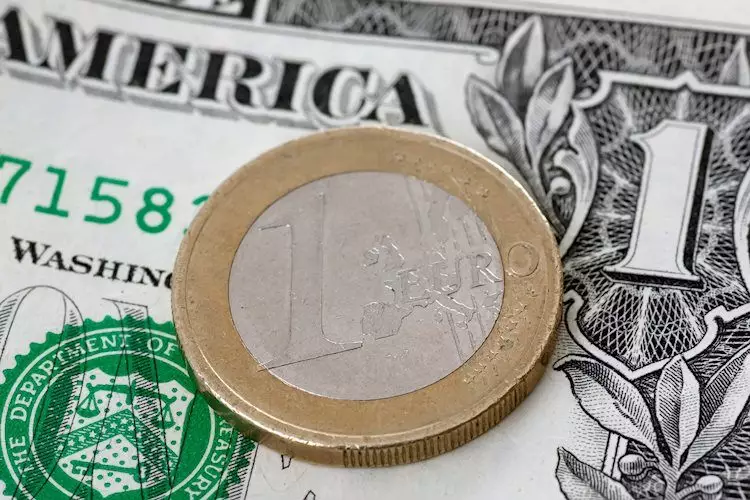The foreign exchange market is an ever-shifting landscape influenced by a myriad of economic indicators, political developments, and central bank decisions. The EUR/USD currency pair, which represents the value of the Euro against the US Dollar, stands as one of the most traded pairs globally, reflecting not just the economic conditions of the European Union and the United States but also the intertwined fates of these two significant economies. Recent movements in this pair highlight the complexities and nuances of current economic conditions and central banking strategies.
As of the latest reports, the EUR/USD has seen a modest rise, trading around 1.0550. This value is indicative of its struggle to maintain altitude close to its yearly low of 1.0496, reached in mid-November. The prevailing feeling in the market is cautious, driven primarily by comments from the Federal Reserve and the backdrop of diminishing expectations of rate cuts in the near future. Indeed, Federal Reserve Chair Jerome Powell’s statements have stoked this cautious sentiment. He asserted there aren’t any urgent signals from the economy suggesting a need for rapid rate reduction, citing the resilience of economic indicators, including a robust labor market and persistent inflationary trends.
The juxtaposition of U.S. economic strength against the Eurozone’s projected inflation decline is crucial. Elevated retail sales figures, which exceeded the expected growth, coupled with a buoyant manufacturing index, have fortified the USD’s position. The markets are factoring in a significant chance—estimated at nearly 60%—of a rate cut at the Federal Reserve’s December meeting, yet the strong economic indicators suggest that any such move would not be taken lightly.
Conversely, the Eurozone faces a contrasting economic narrative. Projections indicate a marked drop in headline inflation from 5.4% in 2023 to approximately 2.4% within the Euro Area by 2024. While a decrease in inflation might seem positive at first glance, it has led to a dovish stance from the European Central Bank (ECB). There is an expectation of policy easing, especially with forecasts showing a downward revision in growth rates, now expected to be around 0.8% for 2024.
The European Commission’s insights further underscored a gradual growth pattern, as EU Economy Commissioner Paolo Gentiloni remarked that while inflation eases, the Eurozone’s growth is anticipated to accelerate only moderately due to low unemployment and increasing private investments. This mixed economic outlook, especially one that points toward potential rate cuts from the ECB, places additional pressure on the Euro, making it less appealing against the USD as investors recalibrate their portfolios.
The significance of the EUR/USD pair transcends bilateral relations between Europe and the United States; it encapsulates broader implications for global trade and investment. In 2022, the Euro accounted for a substantial share—31%—of all foreign exchange transactions, underlining its critical role in international finance. With such a large premium assigned to this currency, fluctuations in its value can substantially impact global trade balances and economic stability.
When the ECB adjusts interest rates, it affects not only the Eurozone but also the global economic landscape. A rise in rates typically enhances the Euro’s attractiveness by delivering better returns to investors. Conversely, if the economy falters or if significant data releases point toward a recessionary scenario, the resulting depreciation could destabilize confidence in the Euro, affecting trade relations and investment flows within and outside the Eurozone.
Plans for monitoring other economic indicators, such as GDP, PMIs, and consumer sentiment, remain of paramount interest. Economic health in key Eurozone countries like Germany, France, Italy, and Spain is pivotal, as they represent roughly three-quarters of the total Eurozone economy. Their economic performance directly influences the Euro’s trajectory against the Dollar.
As the EUR/USD pair continues to oscillate around its lows amid a mix of resilient U.S. data and bearish Eurozone sentiments, it becomes increasingly apparent that traders and investors must navigate a complex web of information. The Fed’s rigid stance against rate cuts juxtaposed with the ECB’s potential policy easing creates a volatile atmosphere for the Euro. As both regions adjust to market pressures, the interplay between economic performance indicators and central bank policies will dictate the future movements of the Euro against the Dollar.
In this dynamic environment, understanding the broader implications of currency movements and the healthcare of economic indicators will be crucial for stakeholders. While the forecast remains cautious, market participants must brace for a landscape that could witness rapid changes in sentiment and strategy within the global foreign exchange arena.

